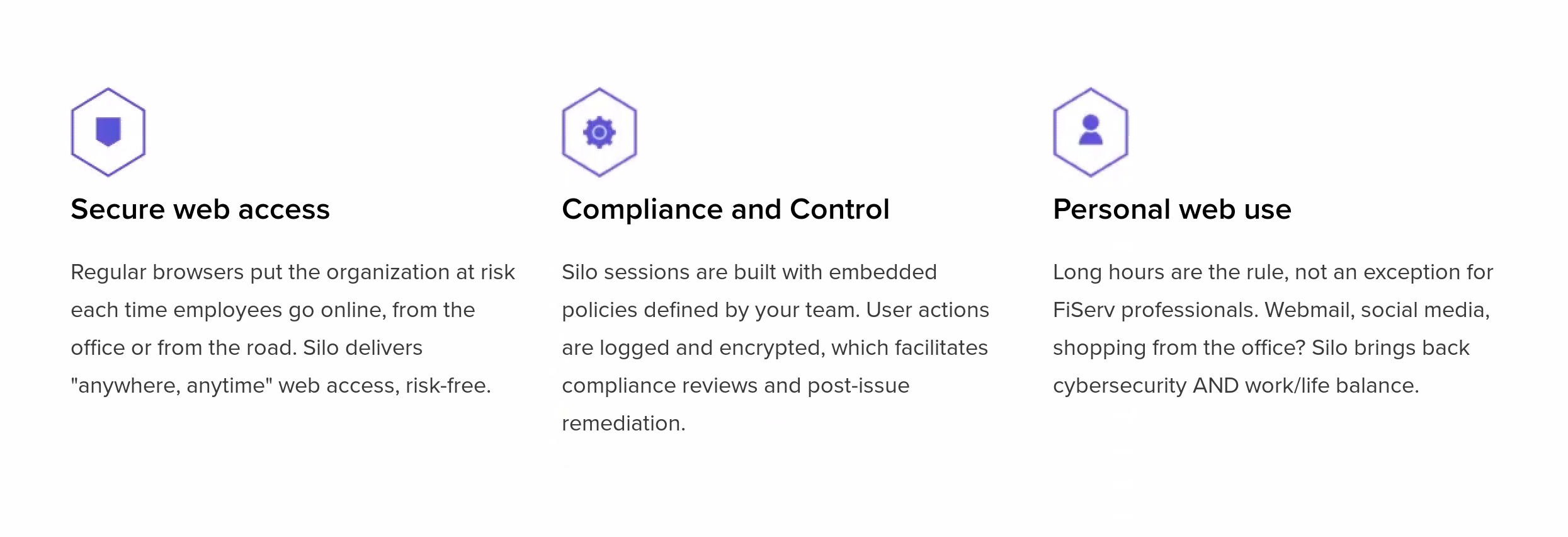Here’s a quick tip for CISOs and compliance officers in banks, credit unions, investment advisors, and wealth management firms who worry about cybersecurity threats that emanate from vendors and third-party apps:
Sounds radical? You may be surprised to learn that this process is well underway in some of America’s largest banks and investment firms. Let me explain.
IT security researchers agree that almost 80 percent of data breaches and malware incidents are web-borne and in some way browser-related. The regular browser has become the main gateway for attacks on the local IT infrastructure of firms (not only) in the financial sector.
Locally installed browsers – including those labeled “secure” by their makers – indiscriminately process all code from the web on the user’s computer or mobile device. The browser opens the door for data exfiltration and for malicious code to infiltrate the corporate network, for example through infected vendor websites or compromised third-party business apps.
The finance sector’s growing reliance on external services and third-party web apps has resulted in a steady increase of attacks exploiting the inherent security vulnerabilities of the traditional browser. So what are financial services company to do, remove the browser?
That’s precisely what I’m suggesting. It’s already happening. Banks, accounting firms, law firms, federal and state regulators, even the nation’s largest supply chain operator – the Department of Defense (DoD) – all have arrived at the same conclusion: Remove the browser, remove the attack surface.
By disconnecting the browser from the internal network and moving it into the cloud, they are creating an additional layer of security, without any of the tradeoffs associated with other approaches to solving the browser crisis.
Leading financial firms have deployed Silo, the secure browser delivered as a centrally managed, cloud-based service by Authentic8.
Authentic8 has pioneered the cloud browser model, also known as remote browser isolation. By creating what has been compared to an “air gap” between the internal network and the web, Silo prevents web-borne exploits from touching the corporate network and puts firms back in control when employees and contractors access the web - including vendor portals and third-party apps.

Employees get a secure, compliant, and personalized browser that empowers them to get things done online. Compliance managers and IT admins get a browser that gives them full control and visibility over their organization’s activities online.
So-called watering hole attacks by (often state-sponsored) adversaries on financial firms have become increasingly common over the past three years. A vendor portal, professional resource or web app your employees are using has been compromised by such an attack?
With Silo, the secure cloud browser, it’s not your problem anymore. You have disconnected from that internet and are ready to leverage a fast and secure web that is safe now for your business.
Download our whitepaper A Cloud Browser Built for Compliance and Control [PDF]. Gain valuable insights into how other organizations in the financial sector use Silo to “disconnect” and turn the web from a liability into an asset.
The original version of this post, titled How Financial Services (FinServ) Companies Can Best Mitigate Supply Chain Risk, appeared first on the Digital Guardian blog.